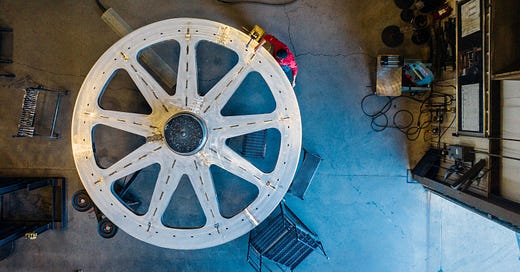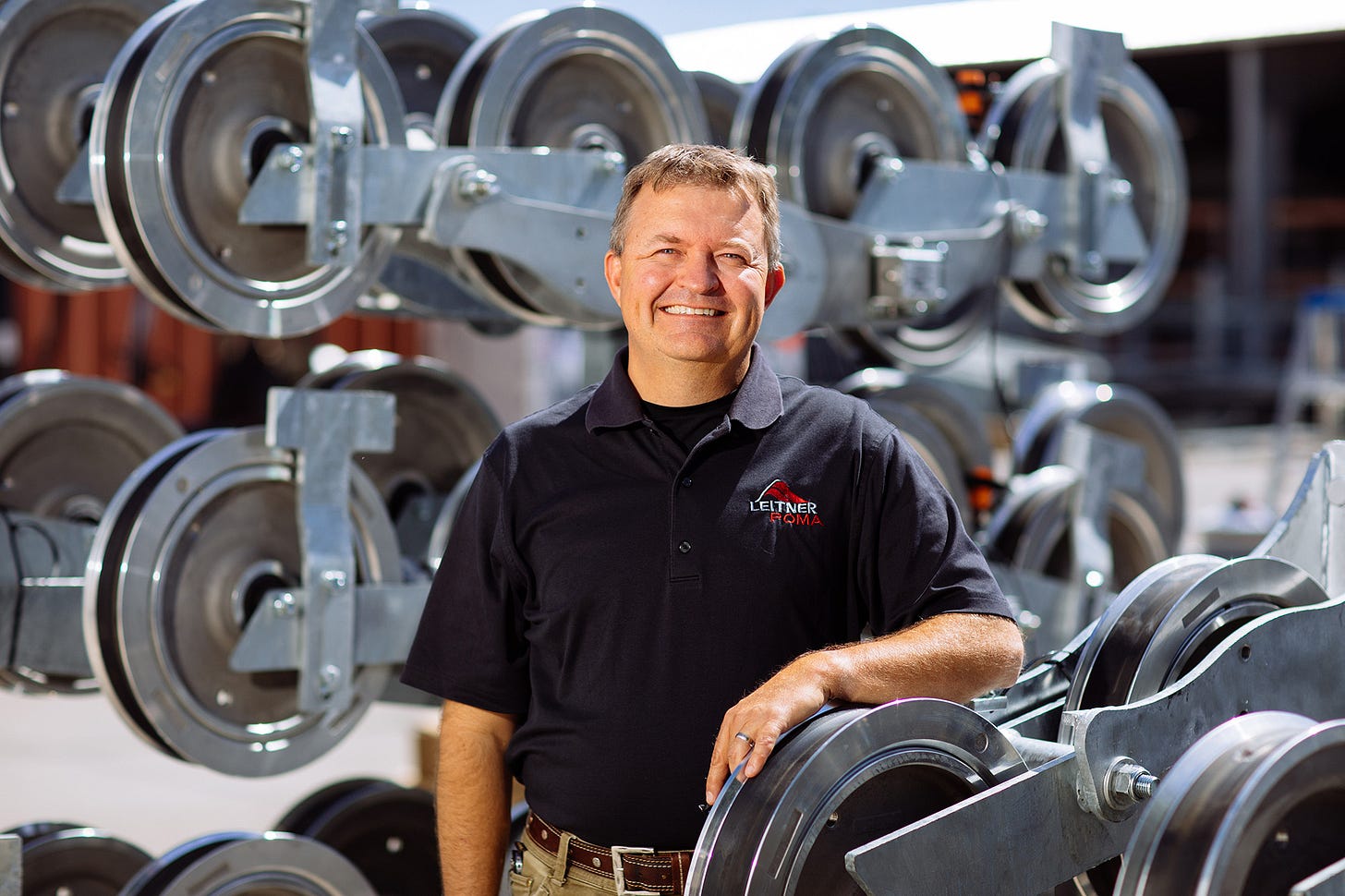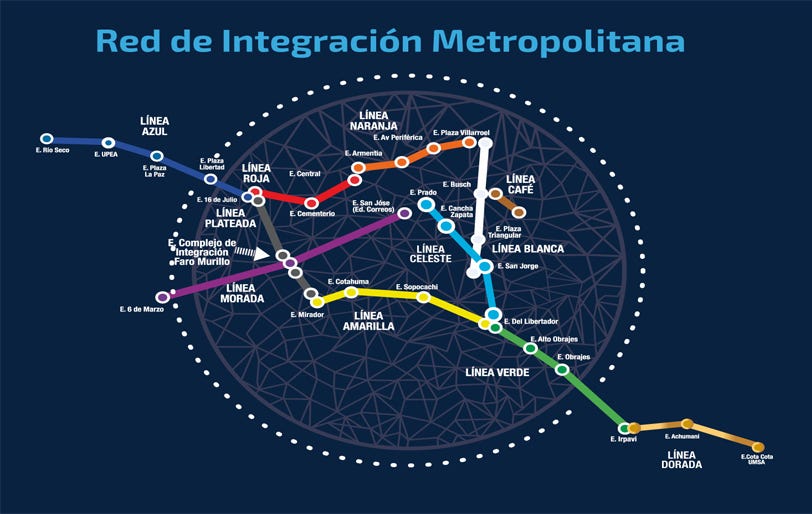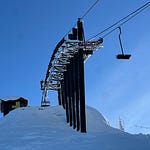Who
Daren Cole, President of Leitner-Poma of America
Recorded on
November 10, 2022
About Leitner-Poma of America
Here’s the website boilerplate:
Leitner-Poma of America offers a complete line of cable transport systems, including surface lifts, chairlifts, gondolas, MiniMetro® urban transport, trams, inclined elevators, and industrial trams.
And this, which makes me go cross-eyed:
Leitner-Poma of America, Inc. is a North American subsidiary of Poma S.A., a corporation with headquarters in Voreppe, France and a sister company of Leitner AG, a corporation with headquarters in Sterzing, Italy. Leitner–Poma of America engineers, manufactures, installs and services all types of ropeway systems for the ski industry, amusement parks, and urban transport.
Cole and I sort through all of this on the podcast. What you need to understand though is that Leitner-Poma is basically one half of the U.S. ski-lift industry. The company also owns Skytrac, which only builds fixed-grip lifts.
The other half of the industry is Doppelmayr, though saying “half” is not exactly correct: Doppelmayr claims more market share than Leitner-Poma. Other companies also claim a handful of lift projects most years - MND is building Waterville Valley’s new six-pack, for example, and Partek is building the new Sandy quad at Saddleback.

Why I interviewed him
The Storm is built around a very specific ethos: that machines are good, and that we should allow them to transport us to mountaintops. I respect and admire Uphill Bro. If I lived in the mountains, perhaps I would be him. But I do not and I am not. I am a tourist. Always and everywhere. I want to arrive to an organized experience. Uphilling is too much work, too much gear, too much risk for my coddled city soul.
And so I ride lifts, and I’ve very specifically focused this newsletter and podcast on the world of lift-served skiing. This is the disconnect between 99 percent of skiers and 99 percent of ski writers. The former live in cities and suburbs and ski Seven Springs three to eight days per year and take a weeklong trip to Park City in February. The latter live in ski towns and hunt the novel by trade, normalizing the fringe. And while I enjoy the occasional Assault Mission recap of the skin up Mount Tahoe Grizzly Ridge, I don’t really care (though I do enjoy following - and highly recommend - the WFG on Twitter or simpleskiing.com).
What I care about is The Machine: how is this sprawling, tangled world of lift-served skiing continuously morphing into the wintertime realms of the 21st century, in which a relatively unchanging number of ski areas must accommodate a megapass-driven increase in skiers armed with rectangular megaphones capable of instantly broadcasting #LiftFails to Planet Earth’s 5 billion internet users? How will an industry still spinning a not-immaterial number of Borvig, Hall, Riblet, and Yan lifts that pre-date the invention of written language modernize without bankrupting the hundreds of family-owned ski areas that still dot the continent? How far can technology push these simple but essential machines, and how high can that technology push their pricetags? How far can ski areas tap them to suck skiers out of the base before they multiply, Midwest cityhill-style, like ants across the mountain and create something more dangerous than congested liftlines – congested, and perilous, trails?
This podcast does not really answer any of those questions, though all are recurring themes within The Storm. Instead, it acts as a primer on what is essentially one half of the U.S. ski industry: what is Leitner-Poma (and how, for God’s sake, do you pronounce it)? What do they build, and where and how? Why are ski areas building so many lifts all of a sudden, and why are those projects encountering so many and so varied delays, from labor shortages to supply chain knots to permitting issues to locals rocking their pitchfork-and-bag-of-rotten-tomatoes NIMBY starter kits to town meetings? Is all this construction sustainable, and can Leitner-Poma and their main competitor, Doppelmayr, adapt to this demand and streamline their processes to forestall future construction delays?
Lift design, construction, and installation is a fascinating, complicated world tucked into - and a fundamental component of - the fascinating, complicated world of lift-served skiing. And it is evolving as fast as skiing itself. Here’s a peek inside.

What we talked about
The wild and unexpected travel routes of an old-school salesman for Purgatory-Durango ski resort; working for Vail Associates in the Arrowhead/pre-Summit County days; Wild West days at Crested Butte; the insane, rapid evolution of the U.S. lift industry; the days when you could order a lift in August and have it spinning by Christmas; how Covid changed the lift game; when you take over a giant company just before a global pandemic; U.S.A.!; the legacies Leitner and Poma, and why the companies merged in 2000; Grand Junction as old-school ski hub and why it’s a great place for manufacturing; how the Leitner-Poma subsidiary-parent company relationship works between Europe and America; Direct Drive; U.S. America hates mass transit; “a chairlift or a gondola is essentially an electric vehicle”; what it will take to spur greater urban lift development in America; what Leitner-Poma of America (LPOA) builds in Grand Junction, and what’s imported from Europe; why LPOA bought Skytrac; expansion time; why the fixed-grip lift persists in our era of bigger-faster-better; how long can America’s antique lift fleet last?; what may finally push independent ski areas rocking ancient Halls and Riblets to upgrade; a record year for LPOA; the changing culture around chairlift permits; breaking down the delays in Jackson Hole’s Thunder lift as a mirror for lift-installation delays around the country; why haul ropes aren’t made in America, and whether they could be; “at the end of the day, I own those delays”; building a better supply chain; are two-year lift builds the future?; labor shortages and building a better place to work; examining the lifts that are on time and why; building the Palisades Tahoe Base-to-Base Gondola; the differences between building on an all-new liftline versus building a replacement lift; how LPOA, the ski area, and the ski area planner work together to decide which lifts to put where; the return of the high-speed quad; and designing a better 2023 lift-construction season.

Why I thought that now was a good time for this interview
We are witnessing one of the busiest lift-construction seasons in modern times: 66 new or relocated lifts are rising across North America, according to Lift Blog. Some monsters, too: new gondolas at Palisades Tahoe, Whistler, and Steamboat; eight-packs at Boyne Mountain and Sunday River; 13 high-speed six-packs. Here’s an overview of the 25 (or 26, if you insist) lifts that Leitner-Poma of America and its subsidiary, fixed-grip specialists Skytrac, are building:
Cole joined Leitner-Poma of America in 2014. The company built six lifts that year (Skytrac, then an independent company, built another six). Scaling up any business is challenging, but scaling up amidst a re-ordering of the global economy and geopolitical environment, and in the midst of a pandemic, is flipping the game to MAXIMUM CHALLENGE mode.
The modern world is both miraculous and mysterious. Where does all this crap come from? An incomprehensible network of mines and foundries and factories and warehouses and tools and vehicles and fuel and laborers and engineers and designers transform the raw materials of planet Earth into medicine and chairs and soccer balls and televisions and Broncos and yard furniture and suitcases and Thule boxes and Hanukkah candles and plastic dinosaurs and Optimus Prime toys. And chairlifts. A book documenting that journey would be an atlas of modern life and this spinning ball it occupies. It would also expose the enormous risks and faults in this impossibly far-flung system, and how a haul rope spun out of a European factory can impact construction on a lift rising up a Wyoming mountainside.

Questions I wish I’d asked
Cole said that LPOA had re-sourced all the materials it had been getting in China to U.S. suppliers. I should have followed up to get a clearer understanding of why the company pulled out of China, and which parts had been flowing from that country.
What I got wrong
In our discussion of urban gondola networks and whether we could ever see one in the United States, I pointed to how well existing systems had worked in “South America, Central America, and Mexico.” While such networks exist throughout South America (in Colombia, Bolivia, and Venezuela), and Mexico, none yet exist in Central America, as far as I can tell. While such systems have been proposed for Panama and Honduras, the one that appears closest to approval is an 8.9-kilometer, 11-station network in Guatemala City that would be built by Doppelmayr.
I stated that only seven of New York’s 51 ski areas ran high-speed chairlifts. The correct number is eight: Belleayre (1), Windham (4), Hunter (3), Gore (2), Whiteface (1), Holiday Valley (4), Bristol (2), and Holimont (1).
I pronounced the name of the company as “Lee-tner-Poma” several times throughout the interview. I actually butchered it so bad that I re-recorded Cole’s introduction – during which I included the name four times – after we spoke. Sorry dudes.
Podcast Notes
Cole, in discussing his time with what was then known as “Vail Associates,” referred to the “Arrowhead days.” This is a reference to what is now the Arrowhead section of Beaver Creek, but was for a short time in the 1980s and ‘90s a separate ski area. Here’s the 1988 trailmap:
The modern Beaver Creek retains some of the old trailnames on what tends to be a very empty part of the resort:
Additional thoughts on urban gondolas
It took about four seconds from the invention of the chairlift for engineers to realize they could attach a little house to the overhead cable instead of a chair. Tada: the gondola. Let’s go skiing.
But a gondola, it turns out, is a pretty efficient means of transit just about anywhere. It just took the world a while to realize it. Since 2014, La Paz, the high-altitude (12,000 feet!) Bolivian capital city, has built a massive gondola network stringing together its far-flung districts:
While Mi Teleférico – as the system is known – was not the world’s first urban gondola system, it is the first to consist solely of cable cars – other systems complement trains or buses. It is also the longest and most extensive. And it is getting longer – at full buildout, the system could consist of 11 lines and 30 stations. The only thing more astonishing than the speed with which this network has materialized is how incredibly inexpensive it has been to build: gondolaproject.com puts the total cost of the 11-line network at around $1.4 billion. For comparison’s sake, New York City’s three-station expansion of the Q subway line, which opened in 2017, ran $4.5 billion.
Gondolas are relatively cheap, efficient, environmentally friendly, and insanely easy to build compared to new roads or rails. Which of course means U.S. Americans are terrified of them. It’s true that the nation, as a whole, is allergic to mass transit, preferring to tool around in 18-wheel-drive F-950s. Fighting anything new is the U.S. American way (where were these NIMBYs when we were punching interstate highways through city centers in the 1950s?). But generations raised in the backs of minivans seem especially horrified by gondolas. The hysteria around the proposed Little Cottonwoods gondola – which would substantially mitigate atrocious powder-day and weekend traffic on a road that probably never should have been built to begin with – is indicative of U.S. American reaction toward non-ski gondolas in general. Everywhere such systems – or even simple, two-station lines – are proposed, they meet instant and widespread resistance.
There are practical reasons why the U.S. has not yet developed an urban gondola network: most of our cities are too sprawling to tie together with anything other than surface transportation (i.e. buses). La Paz, the Bolivian model city cited above, is hilly and tight, laced with narrow webs of centuries-old roads that would be difficult to widen. But there are places such systems would make sense, either as standalone networks or as complements to existing train-and-bus lines: Chicago, Portland (Oregon), New York City, many college towns. A forthcoming gondola connecting a Paris suburb to the city’s metro, soaring over a “hellish carscape” of highways, demonstrates the potential here.
Any such proposal in U.S. America, however, will have to overcome the reflexive opposition that will attend it. In Utah, Little Cottonwood gondola proponents are fighting a basket of idiotic arguments ranging from aesthetic concerns over the height of the towers (as though a car-choked paved road is not atrocious) to indignance over taxpayer funding for the machine (as though tax dollars don’t build roads) to warped arguments that mass transit is somehow elitist (instead insisting that we all need personal vehicles equipped with $1,000 sets of winter tires). It’s all a little pathetic. And that’s for a simple, three-station line way up in the mountains. Just wait until some Portland resident launches a Save Our Cats campaign because a rider in a passing gondola car might glimpse Fluffy pissing in her litterbox.

I’m cynical, but Cole, fortunately, is far more optimistic and diplomatic, suggesting that it will really only take one successful instance of a non-ski, non-tourist-attraction gondola for the notion to take hold in America. I hope he’s right.
The Storm publishes year-round, and guarantees 100 articles per year. This is article 126/100 in 2022, and number 372 since launching on Oct. 13, 2019. Want to send feedback? Reply to this email and I will answer (unless you sound insane, which, given the Little Cottonwood take above, I fully expect). You can also email skiing@substack.com.



















Share this post